Southend Gas Company

Southend-on-Sea
The
Southend
Gas
Company
started
on
27th
January
1854,
when
a
small
group
of
the
local
gentry
met
at
the
Hope
Tavern,
a
building
that
still
stands
today
as
the
Hope
Hotel.
The
meeting
proposed
forming
a
company
dedicated
to
bringing
gas
lighting
to
the
town’s
streets
and
homes.
The
town’s
population
then
was
around
8000,
and
growing,
Southend
was
becoming
a
favourite
with
holidaymakers,
and
the
recent
new
railway
line
was
expected
to
bring
even
more
to
the
town.
These
founding
members
of
the
company
wanted
to
turn
the
dark
streets
of
Southend
into
a
dazzling
blaze
of
light
like
those
enjoyed
in
London.
Mr
Charles
Woosnam
proposed
the
company
to
be
set
up,
with
a
£1500
capital
investment
of
300
shares
priced
at
£5.
Along
with
Mr
Woosnam
the
other
founding
directors
of
the
fledgling
company
included:
E.
W.
Madams,
H.
D.
Brook,
G.
Vandervord,
J.
B.
Brasier,
and
J.
G.
Payne,
with
Mr
Payne
as
chairman
and
Mr
Brasier
as
secretary.
A
vote
on
the
proposal
was
unanimously
backed.
The
new
company
began
a
town
search
for
a
base,
a
site
was
offered
by
Mr
D.
Scratton
who
at
the
time
was
Lord
of
the
Manor
of
Prittlewell,
who
donated
4
acres of his own land.
The
company
was
formed
well
before
the
exploitation
of
the
natural
gas
reserves
in
the
North
Sea
which
happened
in
the
late
1960s.
Until
then
the
United
Kingdom
had
relied
mostly
on
what
was
known
as
“Coal
Gas”
also
known
as
“Town
Gas”
or
“Illumination
Gas.”
The
man-made
gas
was
produced
by
the
forcible
destructive
distillation
of
coal,
coal
was
brought
to
the
works
jetty
by
barge,
then
offloaded
by
conveyor
belt
which
took
the
cargo
along
the
pier
over
Eastern
Esplanade
and
into
the
processing
facility.
The
gas
produced
contained
a
number
of
flammable
gasses
including
hydrogen,
carbon
monoxide,
methane
and
volatile
hydrocarbons
together
with
small
quantities
of
non-calorific
gases
such
as
carbon
dioxide
and
nitrogen.
The
coal
gas
was
used
to
light
street
lights
before
people
started
using
it
in
home
for
cooking
and
heating.
By-products
of
the
process
included
tars
and
ammonia,
these
were
not
waste
materials,
ammonia
was
a
vital
product
in
the
dye
industries,
and
the
tar
was
used
for
coal
tar
soap,
which
since
has
been
outlawed
as
thought
to
be
carcinogenic.
The
process
involved
the
intense
heating
of
the
coal
to
very
high
temperatures
this
breaks
down
the
coal
so
that
it
releases
the
gasses
which
could
then
be
siphoned
off
and
put
into
storage
inside a gasometer.
In
December
1854
permission
was
granted
to
the
company
to
begin
laying
the
first
stage
of
the
gas
lighting
network,
the
initial
streets
included
Royal
Terrace,
Grove
Terrace,
and
the
St
John
the
Baptist
church.
The
first
gas
began
to
flow
on
8th
May
1855,
lighting
some
120
gas
lights,
and
by
March
1856
the
network
had
grown
to
some
340
gas
lights
including
some
in
the
newly
opened
railway
station.
The
continued
growth
of
Southend
saw
its
population
surge
past
28,000
by
1901,
the
growth
of
the
population
was
matched
by
that
of
the
gas
company
which
now
had
some
5000
gas
burning
lights
throughout
the
town.
The
company
by
now
had
introduced
pre-pay
coin
meters
for
those
that
could
not
afford
the
normal
quarterly
charged
bills,
this
enabled
more
subscribers
to
sign
up
to
the
pleasure
of
gas
lighting
at
home.
The
introduction
of
cooking
with
gas
in
1902
saw
some
616
cookers
installed
in
just
two
months
of
going
on
sale,
the
cleaner
more
efficient
style
soon
overtook
the
traditional
method
of
cooking
with
coal
in
the
hotels
and
guest
houses
in
the
town.
On
the
29th
November
1897
an
extreme
high
tide
flooded
much
of
the
town
penetrating
the
gas
supply
pipes,
urgent
repairs
were
immediately
undertaken
which saw supplies re-commence in just six hours.
The
Southend
Corporation
(Council)
offered
to
buy
the
company
in
1899,
however,
the
offer
was
turned
down,
the
company
gained
permission
to
begin
to
supply
gas
to
Leigh
in
1903,
with
Thorpe
Bay
getting
its
first
supplies
in
1907.
In
1901
the
company
opened
its
first
showroom
which
included
a
display
of
the
latest
lights
&
cookers,
and
advice
and
paying-in
desks,
the
venture
was
short
lived
and
burnt
down
the
same
year,
the
company
bought
a
new
property
in
1909
and
reopened the facility in 1927.
The
popular
pre-payment
meters
were
causing
problems
by
the
vast
amount
of
coinage
that
had
to
be
transported
by
the
Gas
Company
employees,
so
the
company
decided
to
motorise
the
collection
service
in
1906.
In
1919,
the
workers
in
the
coal
yard
called
a
lightning
strike
for
better
pay
and
conditions,
whilst
in
1921
they
came
out
in
sympathy
for
the
national
miner’s
strike.
The
company
introduced
a
profit
share
scheme
in
1922,
this
was
instead
of
a
pay
rise,
and
made
the
workers
part
of
the
company’s
success
or
failure.
A
new
gas
holder,
capable
of
storing
250,000
cubic
feet
of
gas
was
officially
put
in
to
service
on
Tuesday
25th
November
1924,
it
had
been
built
by
Messers
Samuel
Gutter
&
Sons
of
Millwall.
The
General
Strike
of
1926
saw
a
unique
show
of
loyalty
to
the
company not one member of the company’s staff joined the strike all remaining at their posts.
During
1911
the
Leigh
Urban
District
Council
agreed
to
buy
gas
supplies
in
bulk
from
the
gas
works
company,
at
this
time
the
Council
had
owned
the
Leigh
gas
works
and
refused
to
sell
it
to
the
gas
company
when
an
offer
to
buy
it
was
submitted
in
1913.
In
November
1918
the
gas
works
siren
was
sounded
to
mark
the
end
of
the
hostilities
of
the
First
World
War.
The
gas
works
company
made
a
successful
bid
to
buy
the
Rochford
Gas
Company
in
1920
and
a
second
offer
to
buy
the
Leigh
gasworks
in
1923,
with
the
offer
being
accepted.
In
the
53
years
between
1900
&
1953
some
125,000
people
signed
up
to
Southend
Gas
the
population
increased
to
some
150,000
people,
with
Southend
and
the
company
rapidly
expanding
into
the
districts
surrounding
popular
resort,
the
gas
company
decided
to
better emphasise the area it served and changed its name to the Southend-on-Sea and District Gas Company.
The
Gas
Light
and
Coke
Company
bought
the
Southend
company
in
1932,
by
this
time
the
gasworks
site
on
Eastern
Esplanade
had
grown considerably, with borough storage facilities in Rayleigh and Canvey.
In
1939
with
the
dark
clouds
of
war
settling
over
Europe,
the
Government
appointed
“Fuel
Overseers”
across
the
country.
The
gas
works
saw
action
in
the
Second
World
War,
it
was
bombed
on
Sunday
10th
August
1940
thankfully
little
damage
was
caused
with
the
majority
of
the
high
explosive
bombs
falling
on
the
mud
in
front
of
the
site.
The
gas
works
were
again
under
threat
on
Thursday
19th
September
1940,
when
German
bombers
targeted
the
seafront
between
Southend
and
Southchurch,
seven
houses
were
destroyed
and
the
gas
network
suffered
extensive
damage
and
numerous
ruptures,
repair
crews
quickly
fixed
the
network
as
soon
as
the
raid
was
over,
and
the
area
was
checked
for
any
unexploded
ordinance.
During
the
war
years
(1940-44)
Southend
received
a
higher
percentage
allocation
of
the
area’s
coal
as
it
was
serviced
by
two
railway
lines
and
was
seen
as
a
strategically
important
part
of
the
nations
home
defence.
The
Ministry
of
Fuel
&
Power
had
established
a
large
coal
reserve
storage
dump
within
the
borough
to
keep
the
towns,
railways
and
defences
supplied,
however
during
the
winter
of
1944-45
it
was
opened
up
as
an
emergency
supply to the large part of Essex.
Another
change
of
name
to
The
Southend
District
of
the
North
Thames
Gas
Board
occurred
during
the
nationalisation
of
the
local
gas boards during 1950-1960.
Southend Timeline Southend-on-Sea © 2009 - 2024. All Rights Reserved
The
Great
East
Coast
Floods
of
1953
again
caused
disruption
to
the
gas
supply,
with
pipes
flooded
special
pumps
were
quickly
deployed
to
pump
the
system
out,
engineers
quickly
got
to
work
repairing
the
gas
pumps
and
valves
and
re-connected
the
gas
supply.
The
gas
works
site
slowly
wound
down
the
amount
of
gas
it
handled
until
the
closure
and
demolition
in
1968
when
the
local
gas
boards
were
nationalised
forming
British
Gas.
The
5
hectare
gas
works
site
itself
laid
empty
and
unused
for
36
years.
In
August
2004
work
commenced
on
the
cleansing
of
the
site.
It
had
previously
been
considered
uneconomical
to
use
the
land
for
redevelopment
because
of
the
high
level
of
contamination
of
hydrocarbons
and
heavy
metals
on
the
site,
further
investigation
also
found
that
much
of
the
underground
facilities
used
in
gas
works
were
still
in-
situ
including
gas
tanks
&
feeder
pipes,
the
original
hard
standings
were
also
discovered
to
be
heavily
contaminated.
The
clean
up
project
has
included,
the
removal
of
the
tanks
and
pipes
the
removal,
cleaning
and
replenishment
of
contaminated
land
has
also
been
carried
out
to
remove
any
pollutants
from
the
site
with
75%
of
the
original
soil
re-used.
A
total
of
some
15,000
cubic
meters
of
soil
was
cleaned
and
re-used
on
the
site.
Once
this
was
completed
plans
were
given
the
go-ahead for the site to be redeveloped.
On
21st
January
1974,
a
planning
application
by
Nore
Marina
Ltd
was
submitted
to
the
council,
this
was
to
undertake
modifications
to
the
gas
works
jetty,
to
enable
boats
to
be
moored
to
it.
Another
application
submitted
to
the
council
was
to
create
a
large
scale
marina,
stretching
from
the
pier
to
Lifstan
Way,
however,
the
application
was
withdrawn
before
it
could
be
scrutinised.
At
the
same
time
as
Nore
Marina
Ltd
submitted
their
planning
application,
they
offered
to
sell
the
jetty
to
the
Council.
Southend
Council
bought
the
jetty
on
the
29th
January
1975
and
arranged
for
the
demolition
of
the
decaying
structure.
Around
the
same
time,
the
Council
hired
ByCel
Metals
to
demolish
a
large
steel
framed
building
on
the
northern
end
of
the
gas
works
site,
a
deal
was
arranged
where
the
Council
would
pay
£15
for
the
company
to
demolish
the
building
and
clear
the
resulting
rubble
with
the
company
keeping any metal they could salvage.
In
August
1982
a
contract
was
issued
for
a
£3375
preliminary
investigation
into
a
future
suitability
development,
this
led
to
a
more
detailed £17,000 investigation into biological and chemical contamination on parts of the site.
In
March
1984
a
planning
application
was
submitted
by
G.
K.
Ladeabau
Southend
Limited,
that
would
have
used
the
part
of
the
gas
works
site
immediately
to
the
right
and
back
of
the
old
gas
board
offices
which
were
in
use
as
the
Pier
and
Foreshore
offices
as
a
car
park
and
for
a
larger
development
on
the
out
of
use
Corporation
loading
jetty.
The
proposal
for
the
loading
jetty
would
have
seen
the
old
warehouse
demolished,
and
the
erection
of
a
part
two
part
three
storey
building
housing,
kiosk,
fast
food
restaurant,
chandlery,
public
house,
health
club,
night
club
and
a
restaurant.
Alongside
the
redeveloped
pier
would
have
been
a
floating
jetty
and
pier
to
enable the mooring of boats, it was also proposed to have a 97 space car park on the loading pier itself.
The North Thames Gas Board
During
the
1900s
the
gas
markets
of
the
United
Kingdom
were
mainly
run
by
local
council
authorities
or
small
private
firms.
During
this
time
gas
was
known
as
inflammable
gas
or
“Town
Gas,”
this
was
piped
to
houses
as
a
fuel
for,
heating,
lighting
and
cooking,
much of the advertising of the gas was via exhibitions and shops on the High Street.
The
gas
supplied
during
the
late
19th
and
early
20th
century
was
a
coal
based
gas.
The
use
of
coal
to
create
gas
was
slowly
phased
out
as the supplies of Natural Gas was increased with wells in the North Sea, and imports from outside the country.
The
Clement
Attlee
Labour
government
of
1948,
undertook
the
implementation
of
the
Gas
Act,
this
would
see
the
compulsory
sale
of
the
1064
privately
owned
and
council
owned
gas
companies
to
new
Central
Government
body,
that
subdivided
the
amalgamated
companies
into
twelve
different
regional
gas
boards,
each
of
these
would
have
its
own
management
structure
and
be
responsible
for
the up keep of its own network.
Regional Gas Boards
1. Scottish Gas Board, Scotland.
2. Northern Gas Board, Durham, Northumberland and parts of Cumberland, Westmorland and the North Riding of Yorkshire.
3.
North
Western
Gas
Board,
Lancashire
and
parts
of
Cheshire,
Cumberland,
Derbyshire,
Shropshire,
Westmorland
and
the
West
Riding of Yorkshire.
4. North-Eastern Gas Board, The East Riding of Yorkshire and parts of the North and West Ridings of Yorkshire (including York)
5. Wales Gas Board Wales.
6.
West
Midlands
Gas
Board,
Parts
of
Cheshire,
Herefordshire,
Leicestershire,
Shropshire,
Staffordshire,
Warwickshire
(including
Birmingham) and Worcestershire.
7.
East
Midlands
Gas
Board,
Lincolnshire,
Nottinghamshire,
Rutland
and
parts
of
Bedfordshire,
Buckinghamshire,
Derbyshire,
Leicestershire, Northamptonshire, Staffordshire and the West Riding of Yorkshire.
8.
South
Western
Gas
Board,
Cornwall
(including
the
Isles
of
Scilly),
Gloucestershire
and
parts
of
Berkshire,
Devon,
Herefordshire,
Oxfordshire, Somerset, Warwickshire, Wiltshire and Worcestershire.
9.
North
Thames
Gas
Board,
Parts
of
the
administrative
County
of
London
and
of
Berkshire,
Buckinghamshire,
Essex,
Hertfordshire,
Middlesex and Surrey.
10.
Eastern
Gas
Board,
Cambridgeshire,
Huntingdonshire,
the
Isle
of
Ely,
Norfolk,
the
Soke
of
Peterborough,
Suffolk
and
parts
of
Bedfordshire, Buckinghamshire, Essex, Hertfordshire and Middlesex.
11.
Southern
Gas
Board,
Dorset,
Hampshire,
the
Isle
of
Wight
and
parts
of
Bedfordshire,
Berkshire,
Buckinghamshire,
Devon,
Hertfordshire, Northamptonshire, Oxfordshire, Somerset, Surrey, Sussex and Wiltshire.
12. South Eastern Gas Board, Kent, and parts of the administrative County of London and of Middlesex, Surrey and Sussex.
The
Gas
Act
of
1972
saw
the
amalgamation
of
the
twelve
regional
gas
boards
into
one
company
controlling
the
whole
of
the
UK’s
gas
supply, maintenance and upkeep, it would be known as British Gas.
In
the
year
2000
the
deregulation
of
the
UK
energy
market
saw
the
UK
energy
market
opened
up
to
private
operators
once
again,
this
has seen eight “giants” taking the lions share of the market, however a number of smaller companies do supply power.
The Gas Works Jetty
The
Southend
Gas
Works
Jetty
was
built
in
1895,
despite
the
fact
that
Southend
Council
had
refused
it
planning
permission
demanding
it
be
redesigned,
the
gas
board
built
it
anyway
getting
round
the
refusal
by
building
the
pier
in
Southchurch
which
at
that
time
had
not
been
absorbed
into
Southend,
this
happened
two
years
later
in
1897
by
which
time
the
pier
was
already
up
and
operating.
At
the
time
of
the
refusal
the
Gas
Company
were
richer
than
the
new
council
which
had
only
been
formed in 1882.
The
Gas
Company
did
take
Southend
Councils
request
about
a
design
change
in
to
mind
when
they
built
the
structure,
the
newly
re-designed
pier
had
a
unique
feature
to
its
design
one
that
stuck
two
fingers
up
at
the
Council,
it
was
built
with
a
kink
in
it
to represent the boundary kink between Southend & Southchurch!
The
Gasworks
Jetty
was
an
iron
and
wood
pier
that
straddled
the
Eastern
Esplanade
Road
in
to
the
gas
works
site.
The
pier
operated
until the closure of the gas works site in 1968 this saw the rapid demolition of the jetty and gas works site.
Gasworks Railway
The
Southend
Gas
Works
had
its
own
dedicated
railway
network,
this
consisted
of
Kerr
Stuart
&
Co
“Wren”
locomotives.
The
Wren
class
was
a
2ft
1¾
gauge
0-4-0
saddle
tank
railway.
The
first
of
these
produced
numbered
850
was
sent
to
Southend
Gas
Works
arriving
on
24th
December
1903.
The
little
locos
were
powerful
for
their
size,
at
75%
of
boiler
pressure
they
would
produce
28hp,
more
than
enough
for
operating
on
the
Southend
gas
works
site.
A
second
loco
Kerr
Stuart
4154
was
delivered
to
Southend
in
1920,
a
third
also
joined
the
railway.
The
railway
ran
down
to
the
ground
level
via
a
boomerang
loop
on
the
western
side
of
the
pier.
The
railways on site works depot was located alongside the main building at ground level.
As
the
ageing
railway
system
became
more
difficult
to
maintain
and
more
expensive
to
operate
it
was
later
replaced
by
a
conveyor
belt
system,
this
would
have
large
hoppers
at
the
end
of
the
pier
into
which
the
coal
would
be
deposited,
it
would
drop
down
on
to
the
conveyor belt, that ran the length of the pier. The conveyor belt was extended on a raised gantry into a building inline with the pier.
The Gasworks Offices
The
original
Gasworks
offices
were
housed
in
a
red
brick
building
on
the
southern
side
of
the
site,
the
building
also
housed
the
public
front
desk
for
people
making
inquiry's
or
paying
bills.
After
the
building
closed
it
was
left
boarded
up,
sitting
empty
and
with
no
maintenance
being
carried
out
to
it
the
structure
begun
to
decline,
the
ivy
slowly
enveloped
the
building,
until
it
was
demolished
in
the
mid
1980's,
the
site left derelict.
Another
part
of
the
Gasworks
site
included
the
"landmark"
for
all
the
wrong
reasons
Esplanade
House,
the
building
was
a
1960
carbuncle
that was looked upon as a blot of the seafronts townscape.
The
building
was
originally
used
by
the
North
Thames
Gas
Board
as
their
regional
office,
those
workers
lucky
enough
to
work
on
the
South
side
of
the
building
would
benefit
from
the
sea-views,
however,
a
major
downside
was
the
draft
the
would
blow
in
from
the
window
frames
an
ongoing
problem
in
the
entire
life
of
the
building.
In
the
1970s
electronics
giant
Pye
announced
it
was
closing
it's
Ekco
Works
facility
in
Priory
Crescent,
the
newly
formed
Access
Card
Company
moved
into
the
Ekco
Works
facility,
as
the
business
grew,
they
took
out
a
lease
on
a
part
of Esplanade House.
With
the
slow
decline
in
Access
it
closed
both
its
Southend
offices
and
relocated
to
Basildon,
it
was
not
the
end
of
the
banking
sector
being
a
resident
of
the
site
as
RBS
moved
into
the
building,
they
then
relocated
to
Maitland
House
just
off
the
High Street.
This
left
the
Esplanade
House
site
vacant
and
it
soon
became
a
target
for
vandals
and
urban
explorers,
the
owners
were
not
pay
rates
on
the
building,
the
Labour
Government
had
changed
the
law
so
that
business's
would
not
have
to
pay
rates
on
any
building
that
was
uninhabitable
so
with
this
in
mind
they
gutted
the
building,
took
out
all
the
utilities
all
the
windows
and
knocked
down
an
entire
end.
The derelict hulk would remain as a blot on the landscape for many years.
Mr Therm & The Wonderful Character
The
mascot
of
the
Gas
Board
was
Mr
Therm,
a
giant
version
of
him
was
fixed
to
the
side
of
the
main
plant
building
on
Eastern
Esplanade,
he
would
appear
in
countless
adverts
over
the
years.
Mr
Therm
was
retired
by
the
Gas
Council
in
1962
as
the
use
of
high
speed
gas
increased
and
the
use
of
coal
based
gas
decreased.
A
new
mascot
was
introduced,
whilst
he
was
never
officially
given
a
name,
he
was
known
as
the
Wonderful
Character
as
he
first
appeared
for
the
“Wonderful
Gas”
advertising
campaign,
he
was
given
the nickname of “Oily Joe” by workers in the company. The character remained in use up until the late 1990s.
The Planning Proposals
The
gasworks
site
remained
derelict
for
decades,
a
major
cause
for
the
lack
of
redevelopment
was
the
cost
of
decontaminating
the
land,
however
a
few
planning
applications
were
submitted.
With
the
eventual
closure
of
Esplanade
House,
and
its
slow
and
steady
fall
in to decay and dereliction the site was a real blot on the Southend landscape.
A proposal was submitted in 1990, to lay a hard standing across the empty section of the site to create a 130 space car park.
Ambassador Hotel
In
2003
the
Ambassador
Hotel
was
envisioned
as
a
luxury
hotel,
with
60
bedrooms
over
7
stories,
three
further
floors
were
to
house
13
serviced
apartments
and
private
Spa
for
residents
and
guests.
The
application
also
included 206 houses and flats.
The
application
was
passed,
but
with
the
condition
that
the
fitness
centre
only
be
used
by
residents
and
guests
of
the
hotel,
in
2004
an
application
was
submitted
to
remove
the
condition,
so
that
the
fitness
centre
could
be
open
to
all,
it
was
given
approval
and
construction
started
but...works
only
got
as
far
as the foundations before work stopped and the site abandoned.
Jetty Point
The
Jetty
Point
proposal
by
Longly
Developments
proposed
to
demolish
Esplanade
House
and
decontaminate
the
land.
Once
the
site
had
been
cleared and cleaned the site would be redeveloped into "Jetty Point"
The
proposals
that
were
submitted
in
2006,
would
have
seen
a
mixed
development,
consisting
of
199
flats,
168
student
rooms,
38
bedroom
hotel,
restaurant
and
retail
floor
space
over
3,
4,
5
and
a
22
storey
tower
block.
Plans
also
included
piazza,
ground
and
semi-underground
car
parking
and
secure cycle parking.
The
application
was
withdrawn
before
it
was
voted
on
by
the
council.
Later
the
same
year
the
proposals
were
submitted
again
but
with
the
tower
block
reduced
in
height
by
one
floor,
again
the
application
was
withdrawn.
Along
with
the
gasworks
site
the
proposals
also
included
plans
to
redevelop
the
old
Corporation
loading
jetty
to
include
the
new
restaurant.
In
2008
another
application
was
submitted,
this
time
the
developers
were
proposing
220
flats,
64
bedroom
hotel,
retail,
restaurant across a development of 5, 5, 6 and 18 stories the application was refused.
The Langley Developments Proposals
A
proposal
was
submitted
to
the
council
by
Langley
Developments
Limited
in
2008,
it
requested
planning
permission
for
the
demolition
of
Esplanade
House
and
the
development
of
the
site
216
flats
in
a
12
storey
development,
this
was
to
be
surrounded
on
three
sides
with
60
one
bedroom
houses,
129
two
bedroom
houses,
27
three
bedroom
houses,
and
a
64
bedroom
hotel,
there
would
have
been
266
car
parking
spaces
provided
over
the
site.
The
total
land
area
proposed to be used in the development was 3495 square meters and 1.4 Ha respectively.
Premier Inn
In
June
2013,
the
Premier
Inn
hotel
chain
submitted
a
planning
application
to
construct
a
part
5
part
4
storey
64
bedroom
hotel
which
including
a
Brewers
Fayre
restaurant
on
the
ground
floor.
The
application
was
passed
in
that
September
with
work
commencing
almost
immediately. The hotel opened for its first visitors in February 2015.
Heritage on site
Whilst
the
site
was
all
but
demolished
and
has
been
redeveloped
for
housing
a
hotel
and
a
car
park
one
small
but
important
piece
still
survives.
One
small
section
of
the
wall
that
surrounded
the
site
remains,
the
listed
structure
hides
a
secret.
Behind
the
wall
is
a
WW2
Home
Guard
Observation
Post.
The
re-enforced
concrete
structure
measures
8ft
5in
x
10ft
3in
and
a
height
of
7ft
3in
(2.6m
x
3.15m
and
a
height
of
2.24m).
At
the
time
of
its
construction
it
would
have
been
partly
hidden
by
the
gasworks
jetty,
making
if
much
harder
to
spot
from
the
air.
A
firing
loop
was
cut
measuring
1.18ft
x
0.26ft
(36cm
x
8cm)
into
the
Gasworks
wall,
this
was
to
enable
the
Home
Guard
to
observe
and
vehicles
moving
along
Marine
Parade
and
Eastern
Esplanade.
However,
the
narrowness
of
the
slot
and
its
very
limited
field
of
fire
would
have
made
it
very
difficult
for
the
defenders
to
fire
at
any
invading
forces
that
might
have
attempted
a beach landing.
New Car Park
The
remaining
3.5
acre
part
of
the
gasworks
site
was
bought
by
Southend
Council
in
2017
after
it
had
lain
derelict
for
a
number
of
years.
At
the
time
it
was
owned
by
Robert
Leonard
Estates,
which
had
secured
planning
permission
for
a
major
residential,
commercial
and
hotel
development.
However,
no
work
was
carried
out
and
the
planning
permission
had
expired.
The
site
had
been
granted
permission
for
a
five
year
temporary
car
park,
this
will
see
338
car
parking
places
available,
30
disabled
bays,
27
coach
spaces
(which
can
be
used
to
boost
the
car
parking
places
by
132)
making
a
total
of
500
spaces.
Gates
will
prevent
the
car
park
being
used for anti-social driving at night with a 10:00pm closing time, however this can be extended for special events.
Memorabilia
The
Southend
Timeline
is
always
on
the
look
out
for
anything
to
do
with
the
Southend.
Here
are
images
of
a
complete
Dealers
Card
Book for the Gas Light & Coke Company, this one dates from the 1940s.
Lights Camera Action!
In
October
2010
the
derelict
Esplanade
House
caught
the
eyes
of
film
producers
and
they
descended
upon
the
site
to
shoot
a
film.
The
film
"Screwed"
a
semi-biographical
story
based
on
the
experiences
of
former
prison
guard
Ronnie
Thompson,
who
spent
seven
years
working
in
some
of
the
UK's
most
dangerous
prisons.
The
story
revolves
around
former
soldier
Sam
Norwood
who
takes
a
job
as
a
prison
officer
when
he
returns
from
Iraq
and
becomes
exposed
to
the
underworld
of
prison
culture
-
including
corrupt
guards
and
drug
trafficking.
The
film
starred,
James
D'Arcy
(Master
&
Commander),
Noel
Clarke
(Kidulthood),
Frank
Harper
(The
Football
Factory), Jamie Foreman (Layer Cake), Andrew Shim (This Is England) and Kate Magowan (Stardust). The film was released in 2012.
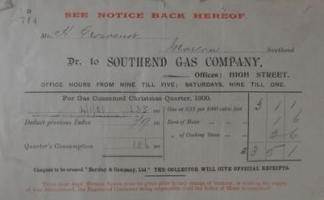
Christmas Quarter 1900, receipt
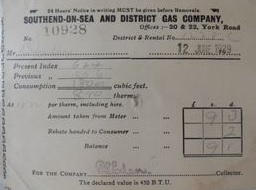
Another
receipt
this
one
dated
12th
June
1929,
this
is
for
the
new
office
in
York
Road
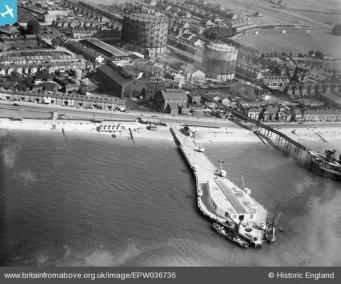
The
Gasworks
site
and
Gasworks
Pier
(to
the
left
of
the
Corporation
Loading
Jetty)
Image
Copyright
of
Britain
from Above
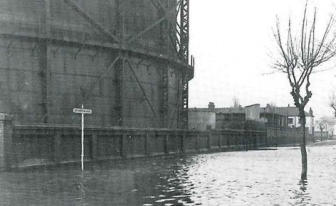
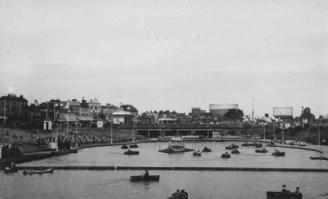
The
Gasworks
site
towers
over
the
seafront
in
this
view taken from over the boating lake
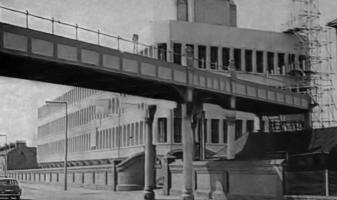
Construction
progressing
on
Esplanade
House,
the
Gasworks Jetty is sitting partly dismantled
The Great East Coast Floods of 1953
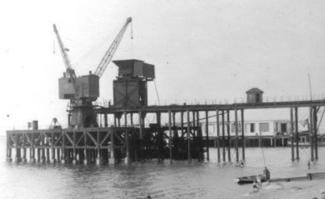
The
Gasworks
Jetty
showing
the
coal
hoppers
that
feed a conveyor belt running into the Gas works site
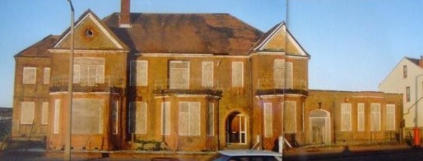
The
original
Gasworks
offices
were
housed
in
a
red
brick
building
on
the southern side of the site

Ivy slowly envelops the building
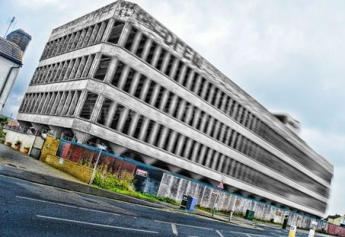
Esplanade
House
viewed
from
Eastern
Esplanade,
an
empty hulk
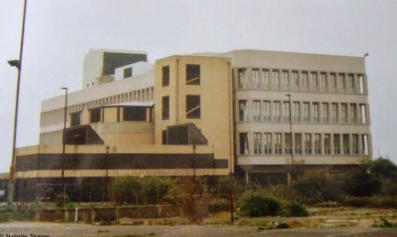
A different perspective of Esplanade House, viewed from behind


Mr Therm
Oily Joe
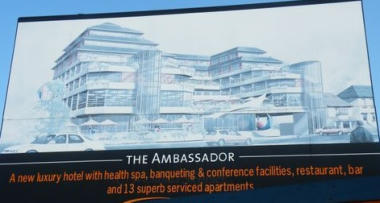
The proposed hotel with apartments
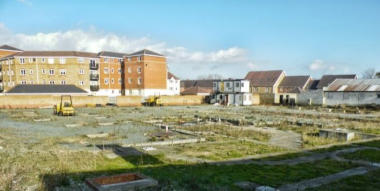
The foundations left laying abandoned
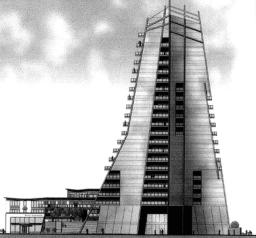
The
22
floor
tower
block
that
was
proposed
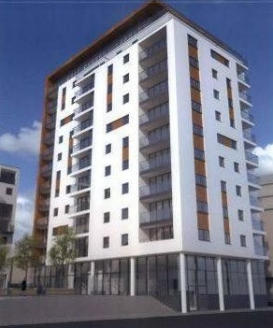
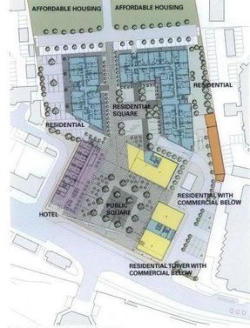
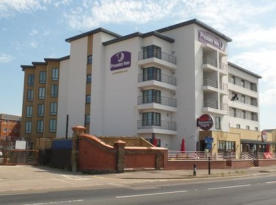
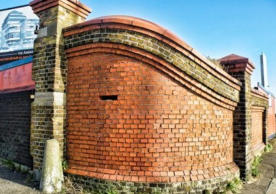
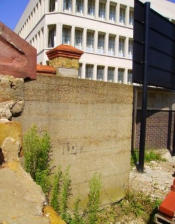



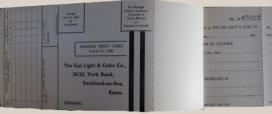
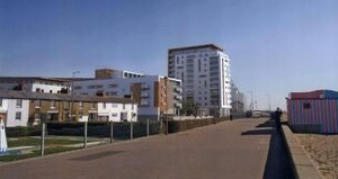



Southend-on-Sea’s No 1 History Website! Documenting The Town & The Townspeople

Now Incorporating The Sea Of Change Website
Website Info:


Chalkwell ▪ Eastwood ▪ Leigh-on-Sea ▪ Prittlewell ▪ Shoeburyness ▪ Southchurch ▪ Thorpe Bay ▪ Westcliff-on-Sea
SOUTHEND CITY
































































